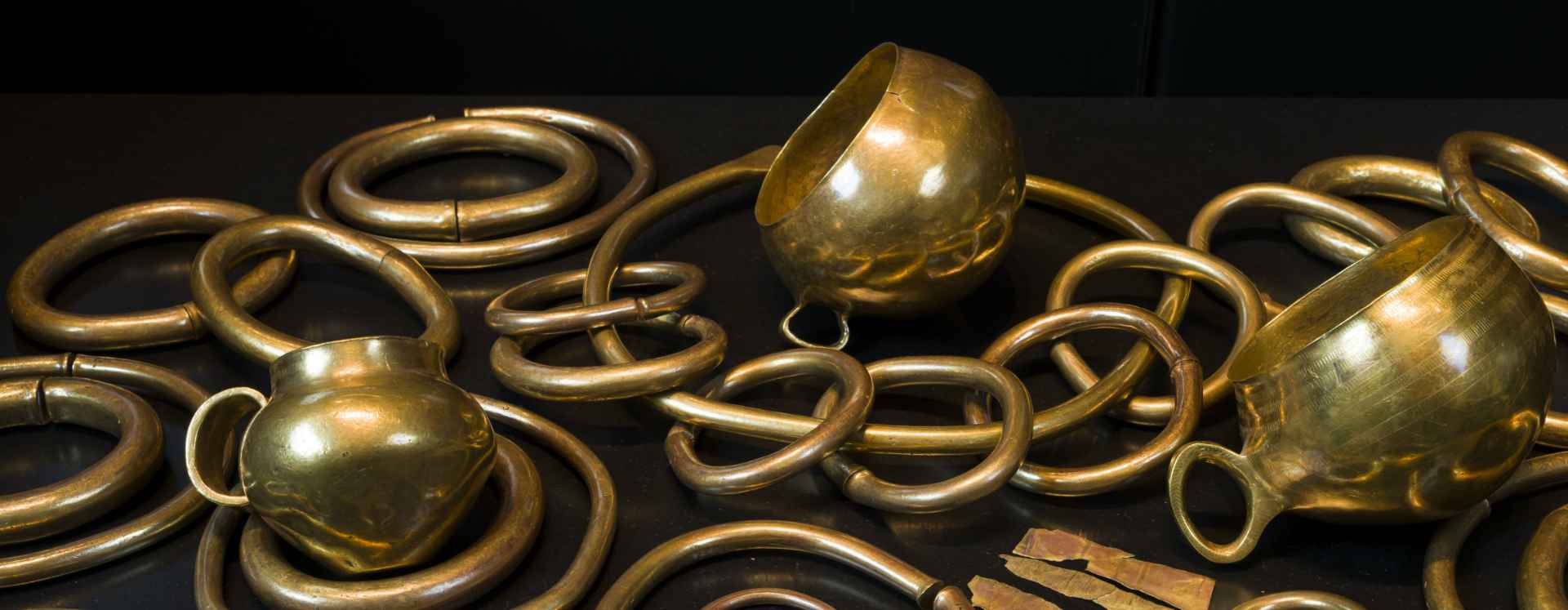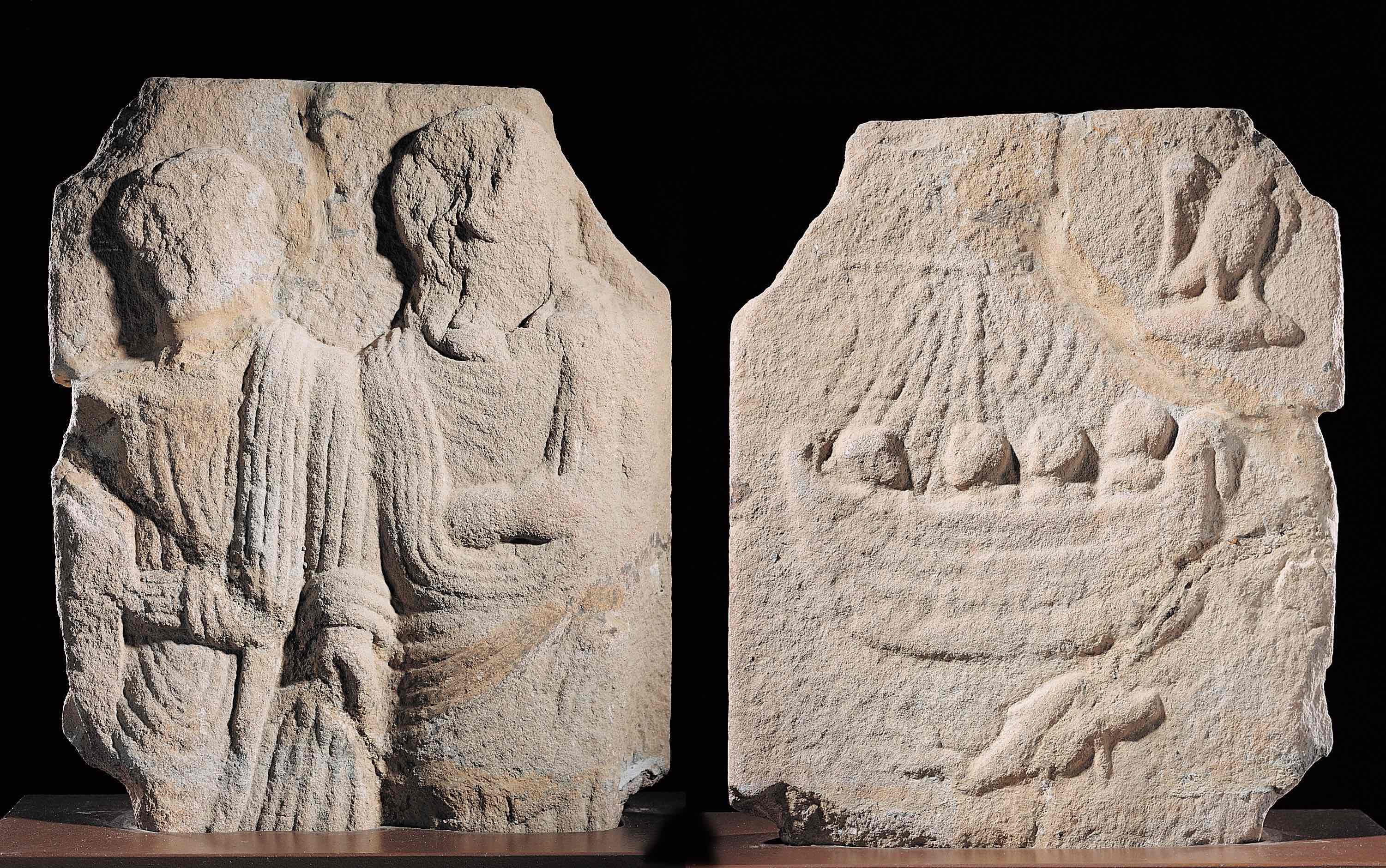STELA FROM VILAR DE SARRIA
The funerary stela from Vilar de Sarria on display in the Sarmiento Building is one of more than twenty-five Galician-Roman funerary stelae erected to commemorate the deceased, preserved in the Museum.
This is an uninscribed piece carved on two sides. The front shows the deceased, a pair of robed figures, possibly husband and wife, whose faces are very deteriorated.
The reverse depicts a sailing ship with four people on board, an eagle and a dolphin. The latter two elements are mainly symbolic in nature, alluding to the world of the dead. The ship possibly refers to the means of transporting the deceased to the afterlife, although since it is a small cargo ship it was also thought that it might refer to the profession of the deceased, perhaps a seafarer or a merchant.
Unlike the rest of the stelae preserved in our collection and the vast majority of those found in Galicia, which show schematic and very flat forms, this is an example of religious art made to order in a provincial environment.
This piece, fragmented into three parts, was found by chance in 1923 in front of the church of Vilar de Sarria in Lugo, together with two column shafts, two millstones, bricks and a slate grave.
This is not an isolated example, since two other similar examples have been documented in the same area near Lugo, in Atán (Pantón) and Adai (Lugo), which could be the work of the same workshop. All of them make up an exceptional group because they are stelae without any inscription or epigraph.
Label
More information
Many of the funerary stelae preserved in the Museum are complete, showing different symbolic or decorative elements, such as the lunar crescent, arches, or sometimes the schematic representation of the human figure. Others retain only some of their parts, including in some cases only the inscriptions or fragments of them. These inscriptions usually begin with an invocation to the Manes Gods.
This epigraphic ensemble is enriched by the collection of fifteen milestones and an even larger number of votive altars.
A representation from all this catalogue is exhibited in the Galician-Roman archaeology room of the Sarmiento Building.



